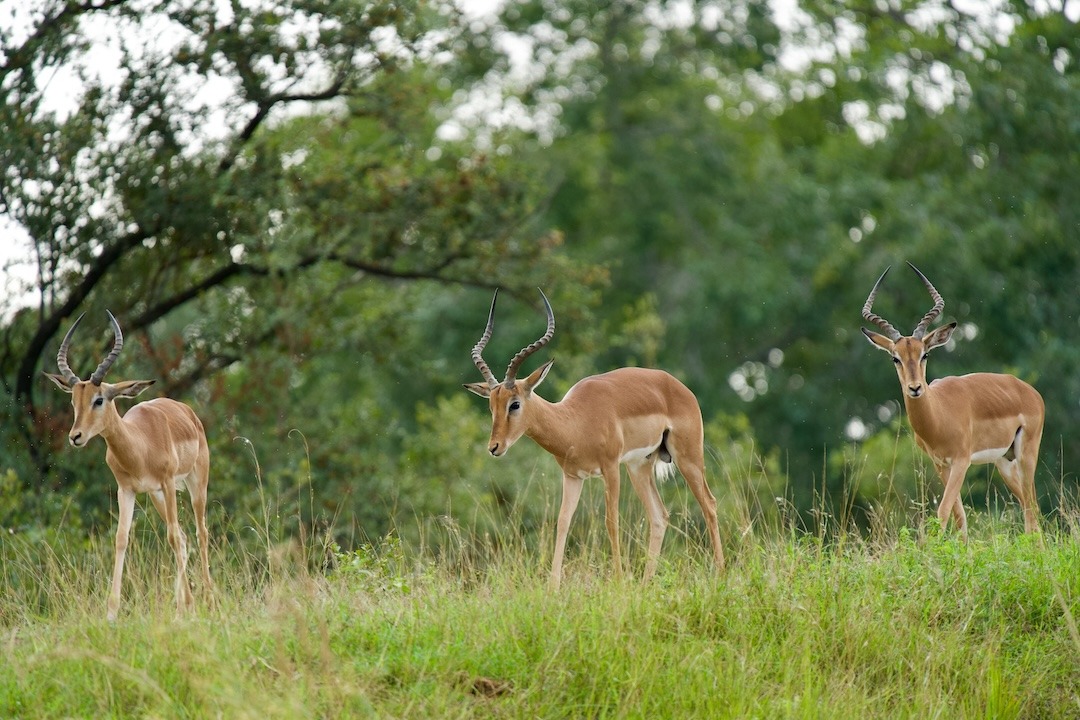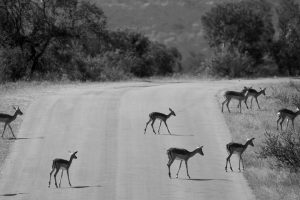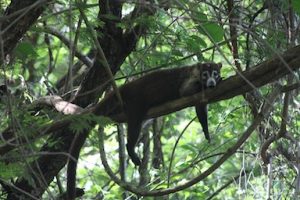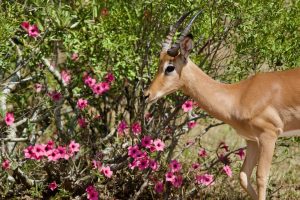 Marshall Mumford
Marshall Mumford
Cornell University
African Ecology and Conservation- Spring 2025
It’s hard to imagine what life is truly like in the wild savanna. A spring semester in Kruger will show you nature, unbounded in the rainy season, reduced to a struggle in the dry. Grass, once a lush green, grazed and dried out by May. Ephemeral streams, once raging, left as bare scars of sand in the landscape. The constant buzzing, swarming of insects hushes to the single ‘bink’ ‘bink’ ‘bink’ of a Creamstriped Owl against the lamp. As life recedes into its winter retreat, one bastion of hope continues to light up every game drive. One creature so resilient, so successful in the savanna; its name alone conjures images of endless herds huddled under the smallest possible acacia trees they could find for shade. A stoic beast, it’s seldom heard, save for the clomping of footprints and screeching of brakes as tourists and seasoned guides alike attempt to understand the subtle “I’m going to cross the road now” message our four-legged friends attempt to convey. Far too often, the only time the wonderful Impala truly gets the spotlight is when the headlamps of a vehicle illuminate a slow-moving line of them, interrupting a game drive.
Let me take you into a scene: it’s six a.m., cold, cloudy. You, an OTS student eager to see some animals, thankful that your TAs woke up early to drive you, are now feeling disheartened. The weather screams, “If I were an animal, I wouldn’t be out in this,” yet, not even ten meters out of the SSLI campus gate, you see your first animal of the day: the humble Impala, mindlessly consuming the bottom third of an acacia tree. It looks up to you with a blank face and a mind that seems to be in a tug-of-war between the words “mmm leaf” and “RUN”. It swerves its neck left, using the momentum of this weird head movement to propel itself into the bush, disappearing without a trace. I can personally guarantee anyone who hasn’t yet had the privilege of visiting Kruger National Park that you will encounter this rare fleeting moment with an Impala twenty to thirty times on any given game drive.
They’re common and easy to ignore, but they are incredible creatures. They make up the backbone of the diet of those big cats, wild dogs, and hyenas people race past Impala to go see. They endure high predation and limited dry-season browse, and still manage to maintain high population numbers. Their fawns are even occasionally taken by eagles. They do their best to keep acacia trees in check.
Munching on tiny, calorically insignificant leaves between massive thorns out of what I can only imagine is pure sacrifice to the rest of the savanna. They even have their own endangered flower named after them. At the start of the dry season, you can find them in rut, with 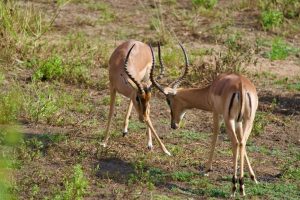 males clashing in gladiatorial combat where, most of the time, they clink their horns together a couple of times and then give up. Come the end of the dry season, female Impala will birth their young in time with the spring rains, and the cycle will begin anew. All this is to say, the next time an Impala almost hits your car or ruins your perfect shot of a leopard doing something arguably more interesting than browsing leaves, thank that Impala for keeping the entire savanna afloat and well fed.
males clashing in gladiatorial combat where, most of the time, they clink their horns together a couple of times and then give up. Come the end of the dry season, female Impala will birth their young in time with the spring rains, and the cycle will begin anew. All this is to say, the next time an Impala almost hits your car or ruins your perfect shot of a leopard doing something arguably more interesting than browsing leaves, thank that Impala for keeping the entire savanna afloat and well fed.
